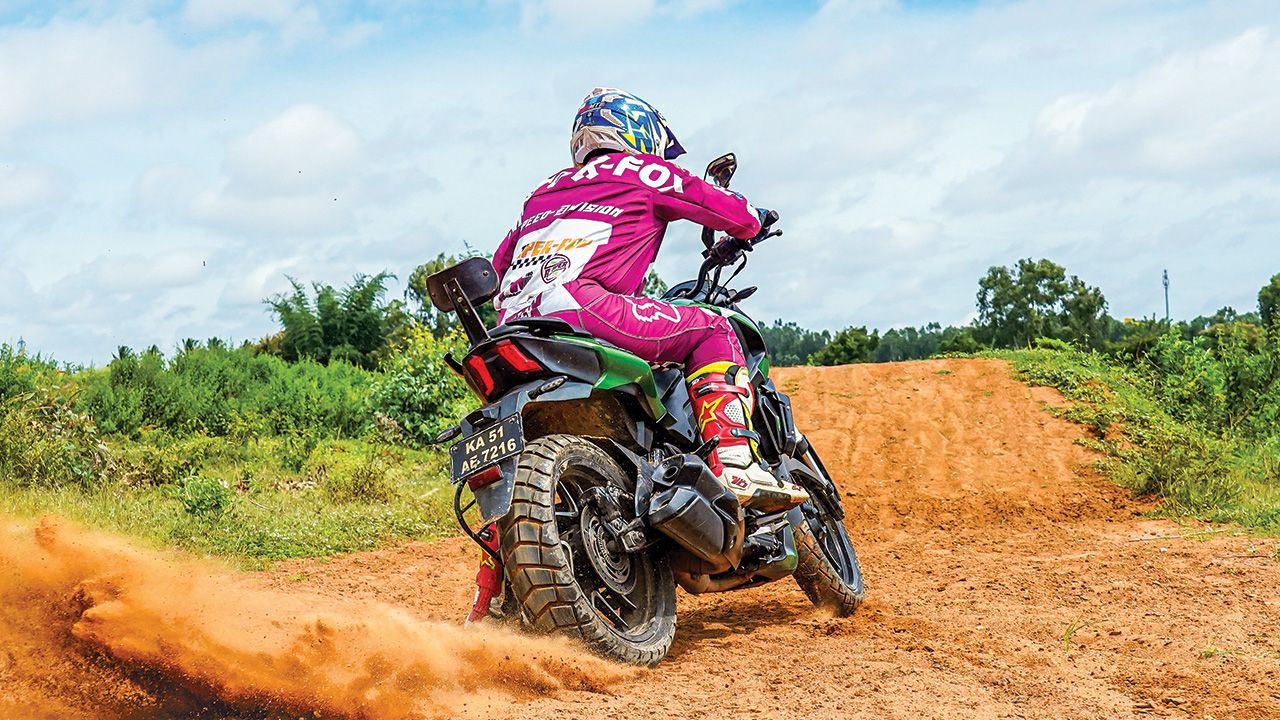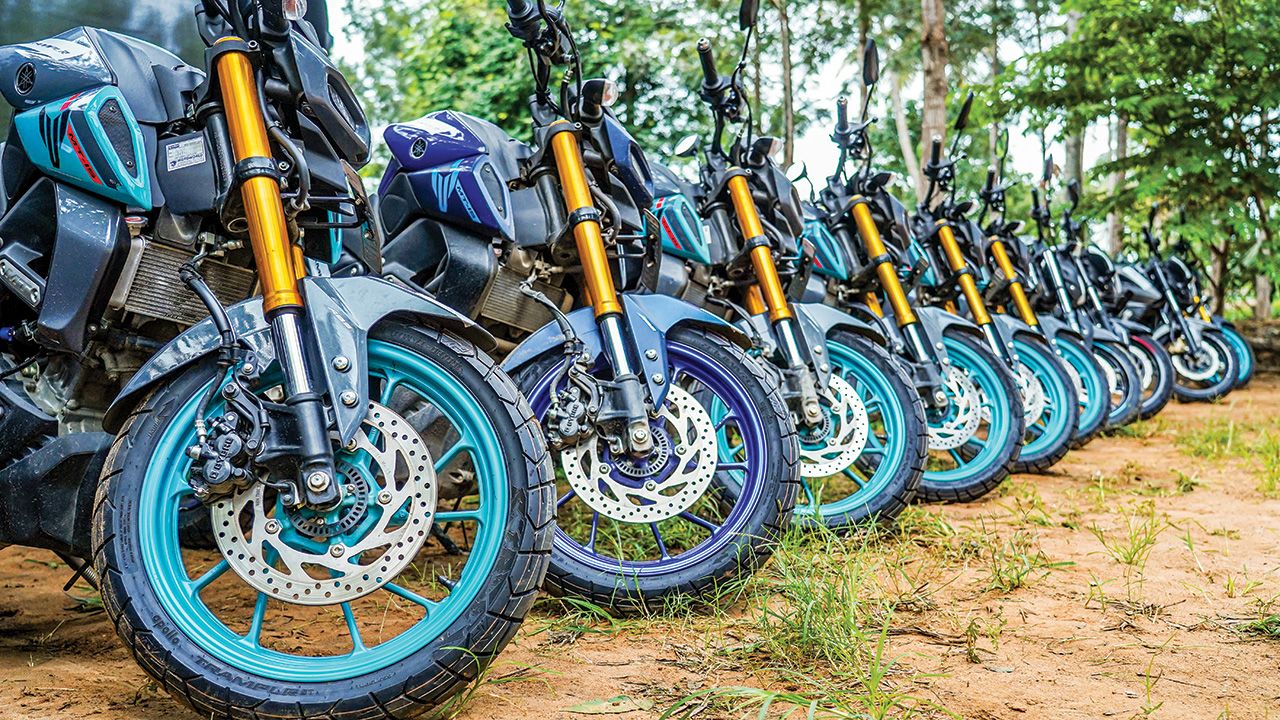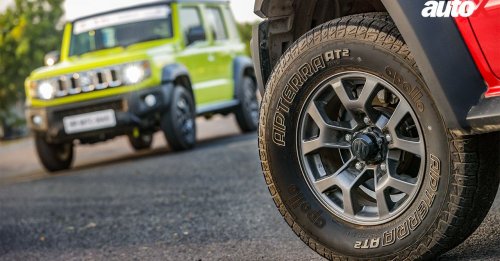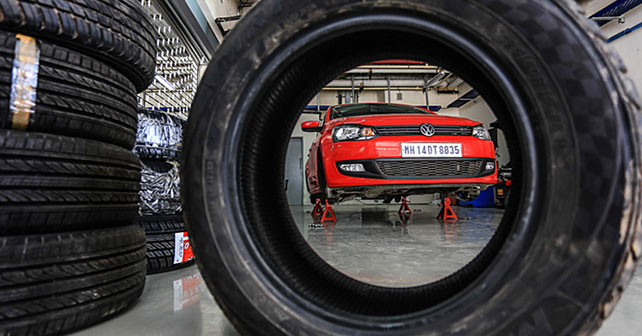
Apollo’s Tramplr range of motorcycle tyres brings ‘adventure’ to the sub-500cc segment at an affordable price. But, is it any good?
A couple of years ago, I was riding a motorcycle from Jaipur to Delhi along with a friend who’d been living abroad for donkey’s years. After covering 100-odd kilometres, we stopped for a tea break and started discussing modern-day bikes and how great they are – even at the budget end – in terms of overall engineering finesse. As I droned on and on about the technicalities and riding dynamics of new-age motorcycles, my friend cut me off suddenly and interrupted, ‘Modern motorcycles are all great, but I’ll be surprised if these tyres would last long on these sh*tty roads. It’s insane what they are put through!’
I paused and realised that he wasn’t wrong. The kind of versatility that’s expected from a tyre that’s meant to roll on Indian roads – featuring elements from cow dung to crater-like potholes to silky smooth highways – is ridiculous. Being black and round isn’t enough for a tyre in India. It’s got to be an all-rounder instead.
Now, that’s exactly what Apollo Tyres has done with its new range of dual-purpose tyres for sub-500cc motorcycles. Dubbed the Tramplr, this new series of block-pattern tyres are available in two variants – XR and ST. The former is a 70:30 (road: off-road) enduro tyre meant for 250cc-500cc motorcycles, whereas the ST is an 80:20 enduro street tyre that will cater to bikes in the 150-250cc segment. We got to sample both variants on a purpose-built track, full of off-road bits like slush, gravel, rocks, broken tarmac and what have you.
Tramplr XR
I first got to test the XR range and my test bike was a slightly beaten-up BMW G 310 R. Yes, not the GS but R. Why’s that the case you ask? Well, that’s because these tyres are meant for daily riding and don’t just single-handedly focus on adventure motorcycles. As a result, they are available in wheel sizes ranging from 17 to 19-inch and are a direct fit on street motorcycles like the Royal Enfield Classic, Meteor, Suzuki Gixxer 250, KTM 390 Duke, Bajaj Dominar, TVS Apache RR 310, et al. Now, again, these aren’t the sort of bikes that you’ll take off-road usually, but given the varying conditions on our roads, you’d agree that every ride turns out to be an adventure outing, eventually.
The test ride was a short affair (30-40 minutes) on a closed off-road track. I’d have loved to spend more time with these tyres for a fair assessment but, having said that first impressions were largely positive. On gravel, the XRs felt confident, offered superb grip, and there was virtually no twitch or slide under braking. And that was pretty surprising because the ABS had been turned off on all motorcycles. Similarly, in slush, the XR’s W-shaped grooves channel water and mud quite effectively. In knee-deep puddles, the wheel did tend to spin up and struggled for grip on a couple of occasions, but this is something you won’t encounter in daily riding in the city.
If there’s one thing that’s a little compromised, it’s the handling on the road. Thanks to the XR’s extended shoulders and block-pattern tread, the tyres don’t offer the kind of cornering confidence that you get from the G 310 R’s stock tyres. That’s the only trade-off that I could think of with these tyres. That said, when we get to spend more time with these tyres on the road, we’ll have a better understanding of how these tyres perform on-road.
Tramplr ST
Next up on the menu was the more street-focused ST variant. And I got to test it on a Yamaha MT-15, which was in a much better shape and condition than the aforementioned G 310 R.
While the XR uses steel radial technology in its construction – except for 90-90/19 & 100-80/17 sizes – the ST is a cross-ply tyre. It’s meant for 150-250cc motorcycles like the Apache RTR range, Bajaj Pulsar, Yamaha MT-15, Honda X-Blade, and so on. The XR is available for motorcycles having 17-inch wheels at both ends.
On this occasion, our test route included more broken tarmac than an outright off-road course/trail. Again, the ride was very short to form a concrete opinion, albeit a few observations were quickly made. Over bad roads, these tyres definitely give you more confidence and the grip levels are vastly improved over the stock tyres. You have more confidence while tackling broken and gravelly roads. However, on smooth roads, you can immediately tell the steering is a bit slow compared to how it feels on an MT-15 with OE-fitted tyres. Under hard braking, the bike felt supremely stable and the ABS didn’t go into a frenzy, meaning the tyres offer decent traction despite featuring a harder compound than your regular street tyre. Again, we’d have loved more seat time but the first impressions of the ST are that it’s a very capable tyre on bad roads.
Verdict
While we didn’t get to test these tyres to our heart’s content, I’d give the Tramplr range a benefit of the doubt based on my first impressions and Apollo’s reputation for making great motorcycle tyres in the recent past (Alpha H1, Vredestein). Not to mention, these tyres are priced really well – the XR range costs ₹6,500 – 12,000 for a pair, while an ST pair is offered from ₹4,500 – 6,000. What’s more, Apollo will add 21-inch tyres to the range soon, and that’ll make the XR a great option for entry-level ADVs like the Himalayan.
Read more:
























Write your Comment